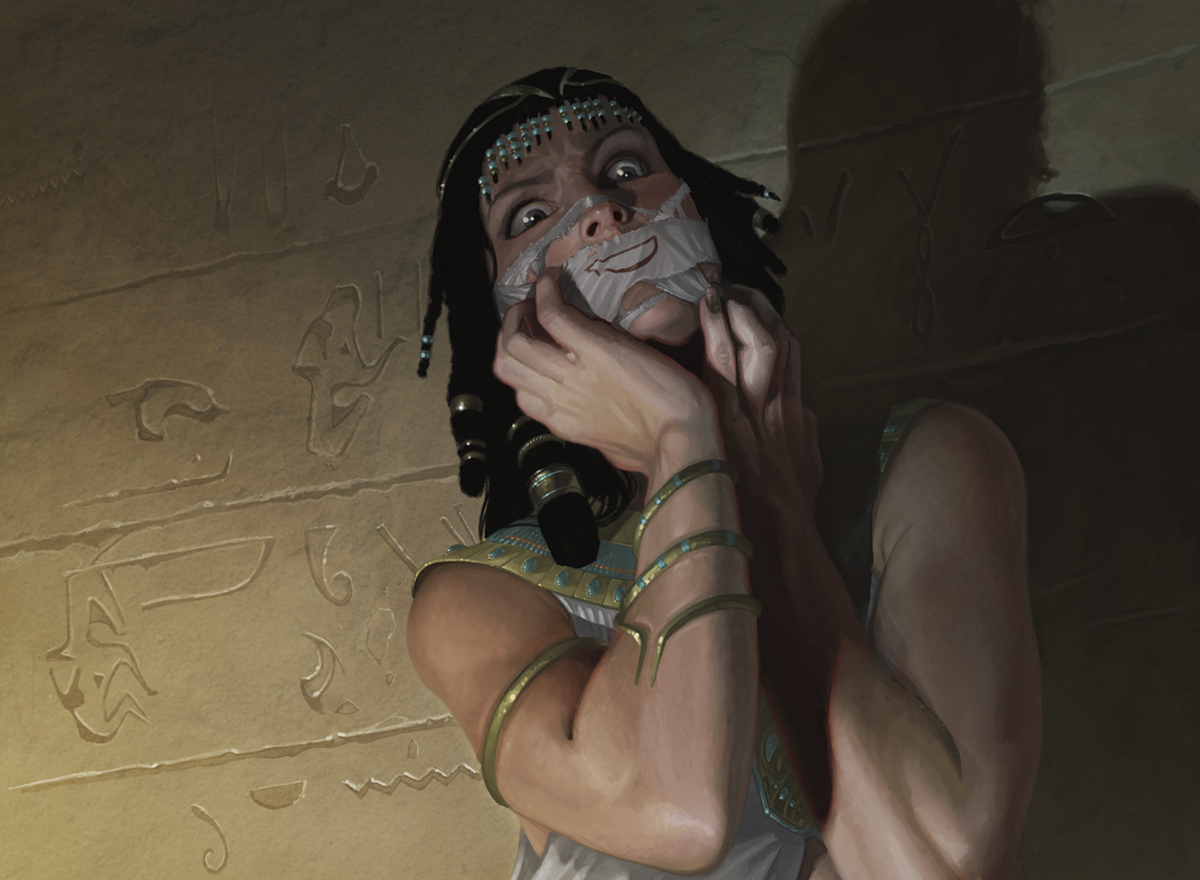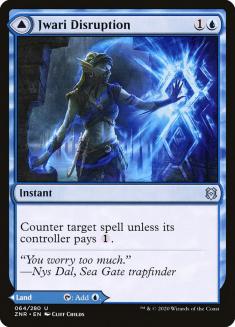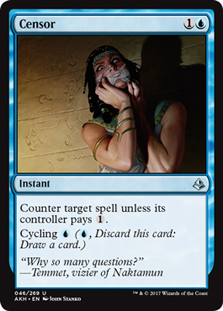Hello, and welcome to this edition of Sullivan’s Satchel. I’m writing this in the aftermath of a comprehensive set of bans to a variety of formats. This was the first internal conversation about banning updates where I weighed in heavily and I had a few specific horses in the race. I don’t want to unpack everything here, but I felt (and feel) very strongly that the worst-case scenario was banning a bunch of stuff, only to have the new best thing get built around something that was close to getting banned and had probably outstayed its welcome in its specific format.
I think all the cards in question were some combination of massive rate outliers, low-opportunity-cost ways to win long games that crowded out other options, cards that facilitated fast combo kills, and/or were cards that would be impossible to balance the format around in the long-term. I think the bannings are efficient in that they effectively unban a bunch of stuff that had been powered out of their format, and hopefully the increased possibility space plus healthier play patterns more than compensate for people losing their cards, especially over a long horizon. It was and is painful in some respects, but I’m confident things will be better long-term for it.
With that, the questions. As always, you can send in yours to [email protected] or DM on Twitter @BasicMountain. One question will win Question of the Week and receive $25 in store credit, on top of receiving my blessing.
Eric Wong asks:
What is a creature type that you would like to see return and/or see more support for?
I have a lot of fondness for the weird types in Fallen Empires. For as much as that set gets dumped on for being low-powered and a bit boring, as a kid I thought the tone was pretty incredible — a more localized Dungeons & Dragons experience in contrast to the broad, sweeping execution of Alpha, like being transported from reading the Monsters Manual to being put in the middle of a campaign. Even the non-Human and adjacent creature types felt like they had to buy in, so the creatures weren’t ambient parts of the environment, but active agents in conflict.
I still love the execution of Thallids and Homarids. Thallids were extremely popular in spite of being very weak, and in some respects they serve as a precursor to tokens-matter, graft, moving things around, and other mechanics and concepts that still inspire designs today. Homarids get better or worse depending on where they are in alternating turns, and that’s not the most different thing from Day/Night. Very few people remember this stuff because the power level was so low that they barely got played at the time, much less today, but a reboot of those types, with more power and some tweaks, would make me very happy (to be clear, I think this is extremely unlikely).
Pulling from something a bit more recent, I love Wizards. I think doing “spells matter” on a bunch of creatures is a good way to get the “spells matter” experience without creating games lacking interaction points. The incentive structure of “I want a mix of spells, and a mix of creatures that pay me off for playing with spells” naturally creates some cool deckbuilding incentives and puzzles as well. I don’t know how much more material support Wizards can absorb — it’s already one of the better creature types in Pioneer and even shows up in Modern every now and again — but I think Wizards are very fun, novel, materially different from other tribes, and gives a home to certain types of cards that are otherwise out of place in a creature type-focused experience.
From Chance:
For mailbag thing (?) – Recently limited has been very good from standard legal sets, but constructed has been struggling. Does pushing limited environments force strong dependence on in-set mechanics (adventure, energy) that negatively impact constructed? Or no correlation and it’s mostly design/power level issues.
The short answer: it’s much harder to balance Standard (or any other Constructed format) than Limited. Some examples/reasons:
- It’s much easier to eyeball Limited. A lot of the values are pretty well known, and that creates an architecture that doesn’t require reinventing the wheel each time. In Standard, the key pieces are different each time, as are some of the constraints (how good the mana is, what counters and removal are legal, etc.), and so the amount of investigation that’s required before you even know what the terms of engagement is literally orders of magnitude greater in Standard than in Draft.
- The barrier to entry in Draft or Sealed is so high (in terms of number of games played per dollar spent) that many players have a natural “cap” on how much they’ll draft regardless of the relative quality of the format. That isn’t an excuse to hand-wave balance or fun, and some people will draft literally hundreds of times if they enjoy the format, so it’s worth striving for quality. Still, many players will draft a few times and then check out before even seeing all the uncommons in-game, and this is even more the case with the more costly Modern Horizons-style offerings.
- There’s natural insulation from mistakes, as Draft is naturally self-correcting to an extent. If green is the best color and everyone drafts it, suddenly it is correct to draft a weaker but more available color. Additionally, the cards that contribute to poor balance don’t show up in every game or draft, whereas in Constructed people just play the best cards over and over again. As an example, black and red were miles above the other colors in the first Zendikar, but that information isn’t as widely known to the average FNM player and the cards that create that distortion aren’t in each booster. If a Constructed format was as unbalanced as Zendikar Draft was, it would require numerous bannings to fix. Instead, it was a feature of the format only some people knew about and even fewer people cared about.
All this adds up to a reality in which it’s easier to get Limited most of the way right with some “paint by numbers” methodology that in no way applies to balancing Standard. I think Play Design takes Limited very seriously and spends the time taking it from “good” to “great,” but they aren’t remotely comparable challenges.
From Turkey Time:
Are there any formats that players seem to remember fondly that wouldn’t hold up under today’s conditions? Any that might have thrived if they were introduced today?
I think all of them might suck? Maybe that’s an exaggeration, but I remember playing a ton of Magic twenty years ago with play patterns that aren’t even close to acceptable by current sensibilities — all counters, all land destruction, Turn 2 Yawgmoth’s Bargain kills — and the thing I remember most fondly was how much “variety” there was. This is obviously total crap. To the extent there was variety it was subsidized by people playing awful decks (is that what I remember fondly? winning a lot?) and among people who “knew” what was going on the terms of engagement were extremely limited. You either had to win extremely quickly or prevent your opponent from resolving a game action. It simply would not hold up today.
I’d guess Invasion/Odyssey Standard would hold up the best. Plenty of stuff to do, games were slow, mana wasn’t embarrassing by modern standards. Very low confidence that it would be any good in absolute term — the amount of games and distribution of information now compared to even people preparing for the Pro Tour is worlds apart. In a competitive sense it isn’t even really the same game.
Lastly, the Question of the Week, from Joseph Schuster:
Mailbag Question: I’ve tried out DragonBall Super CCG and the design choice to make every card a ‘split’ card of its versions of ‘creature’, ‘spell’ and ‘resource card’ made games feel much more dynamic and reduces non-games from happening due to variance. I know this isn’t a new idea, but do you see MDFCs as WotC’s way of implementing that concept into Magic’s design philosophy?
There are a lot of mechanics that play in this space — cycling, scry, even kicker are ways of introducing modality and protection from the worst parts of Magic’s variance (someone doesn’t get off the ground) without dampening the replayability too much. With Best-of-One a more supported format, giving people maindeckable ways to interact with fringe card types (say, Dissenter’s Deliverance) is a priority as well.
These mechanics can appear similar, but I think the modal DFCs are a vast improvement over cycling. I’m cooler on cycling than the average designer, so take that with a grain of salt, but in terms of getting the upside without the downside it isn’t close. Compare Jwari Disruption to Censor, about as close of a comparison as you can get.
Jwari Disruption is way more reliable in terms of alleviating screw and preventing mulligans. It’s actually a land when you want it to be, whereas Censor gives you a shot at one if you spend mana. Not being on the hook for mana (to say nothing of it requiring blue, which your opening hand may not have) and knowing for sure that you have a land instead of a redraw lets you keep hands more often and with more confidence.
In spite of that, Jwari Disruption isn’t stripping all the variance out of the game, because you actually have to make do with either half of the card, and there are plenty of spots where neither a blue land that enters the battlefield tapped nor a two-mana Force Spike is a card you want in your hand.
That’s the contrast with Censor, and why Censor is a much riskier and more insidious design. The opportunity cost of drawing it isn’t especially high outside of your opening hand (and even then we aren’t talking much), and you’re never on the hook to make lemonade out of lemons. Part of this is a rate issue (Censor is just much more powerful), but even if you controlled for that, Censor introduces a heap of issues that Jwari Disruption doesn’t.
All these mechanics play in the same sandbox and share some goals, but as a rule I’m a big fan of modal designs that force you to make do with something on the text box instead of bailing on the text box altogether when the text box isn’t desirable. I think there’s room for all of it, but I think the modal DFCs are a huge step forward for helping alleviate the worst parts of Magic’s variance and hope to see more mechanics like it.




